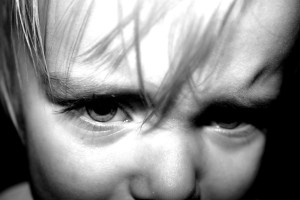 Anxieties and fears are a natural part of everyone’s normal growth and development. We all feel nervous and fearful at one time or another. Children’s fears are also a normal and necessary part of their learning and development. It is adaptive to children to have fears of the world in different ways. This helps young people to learn about themselves and how to handle normal challenging situations of life.
Anxieties and fears are a natural part of everyone’s normal growth and development. We all feel nervous and fearful at one time or another. Children’s fears are also a normal and necessary part of their learning and development. It is adaptive to children to have fears of the world in different ways. This helps young people to learn about themselves and how to handle normal challenging situations of life.
Having fears or anxieties about dangerous situatinos can be helpful because safe behaviour and awareness of injury. For example, a child with a fear of strangers would avoid being alone with one.
Anxieties and fears in young children tend to have a typical developmental pattern:
- Babies around the ages of 6-8 months begin to experience stranger anxiety, clinging to parents when confronted by people they don’t recognize.
- Toddlers around the ages of 10 -18 months experience separation anxiety, becoming emotionally distressed when one or both parents leave.
- For younger children. aged 4-8, fears usually involve immediate, concrete threats. For example, some typical fears are: spiders, darkness (and hence monsters, ghosts), animals (eg. dogs), costumed characters that are intrusive (eg. clowns), and loud noises.
- Kids ages 7 through 12 often have fears that reflect real circumstances that may happen to them, such as bodily injury and natural disaster. Fears at this stage may include injections/ needles, going to the dentist, natural events (e.g. storms, lightening, earthquakes), heights, enclosed spaces (e.g. elevator, tunnels)
How does a normal fear turn into a phobia? Research suggests that phobic anxiety has a strong genetic component. Just like anxiety, it runs in families. But there are usually environmental factors and experiences contributing to developing a phobia. For example, some young people develop a phobia after being exposed to a traumatic or frightening event. So a child can develop a fear of cars after being in a car accident. Other times, children can develop a phobia after hearing information that is frightening for them, or being frightened to stay away from something in particular. For example, a phobia of dogs after being repeatedly warned that dogs are dangerous and could bite. Finally, a child may develop a phobia from observing modelled anxious behaviour of someone they trust. For example, a child may develop a spider phobia after watching another family member scream and run away when seeing a spider.
Children and teens with phobic anxiety experience the same unpleasant physical symptoms as those experienced with panic attacks: increased heart rate, shortness of breath, chest pain or discomfort, stomach upset/pain, sweating, trembling or shaking, feeling of choking, numbness. Although there may not be anything physically wrong with a phobic child, these feelings are real and should be taken seriously.
It is difficult to live with a phobia, as anyone who has one will attest. Most people manifest their phobias with common behaviours designed to protect them from coming in contact with the feared object or situation. Phobic children tend to: avoid the object or situation that they fear, including lying and making up excuses; depending on age they may cry, tantrum, cling, freeze, or want to be picked up; they truly believe the dreaded experience will happen if they are not vigilant, “The dog will bite me!” “I’m going to fall!” “I will go crazy/lose control!” “I will faint!” “It will hurt too much!”
To help your phobic child, you will need to learn how to approach anxiety and phobic anxiety in a new way. This means, teaching yourself how to teach your child to handle their feelings.
Children need to learn how to recognize their anxiety cycle, how to engage in rational, calming thought (for example, having a calming mantra to repeat), control their breath so they do not hyperventilate or stop breathing, reach out for their support person to help them when they need it.
Parents need to learn how to support the steps their child is taking, how to recognize when progress is being made and how to make the fear rational for children. This means helping the child to feel safe when confronting their fears. Counselling can provide support to parents and it can also help children deal with fears directly. Cognitive Behavioural Therapy is the main approach to dealing with anxiety based issues in people of all ages. It addresses the thought processes that lead to anxious feelings and works to shift them to ones that are adaptive and calming. Systematic Desensitization or Exposure Therapy are ways to help the child face the phobic object or situation in a safe, slowly paced way. And EMDR can be used as well to address the underlying beliefs associated with phobias.
